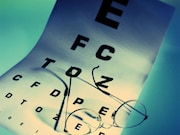Several significant demographic and socioeconomic differences impact use of eye care
MONDAY, June 24, 2019 (HealthDay News) — Rates of eye examinations within the past two years are generally high among U.S. adults aged 50 to 80 years, according to a study published online June 20 in JAMA Ophthalmology.
Joshua R. Ehrlich, M.D., M.P.H., from the University of Michigan in Ann Arbor, and colleagues used data from the 2018 National Poll on Healthy Aging to assess the proportion of older U.S. adults (2,013 adults aged 50 to 80 years) who received an eye examination within the past two years as well as factors associated with receiving eye care.
The researchers found that 58.5 percent of respondents reported undergoing an eye examination in the past year, while 82.4 percent reported having one in the past two years. Reports were higher among respondents with diabetes (72.2 and 93.1 percent, respectively). Those more likely to have had an eye exam in the past two years included women (adjusted odds ratio [aOR], 2.00), respondents with household incomes of ≥$30,000 (aOR, 1.57), and individuals with a diagnosed age-related eye disease (aOR, 3.67) or diabetes (aOR, 2.30). Individuals who were unmarried (aOR, 0.71), were from the Midwest (aOR, 0.55) or West (aOR, 0.60), or reported fair or poor vision (aOR, 0.43) were less likely to have an eye exam. Reasons cited for not having a recent eye exam were having no perceived eye problems (41.5 percent), cost (24.9 percent), and lack of insurance coverage (23.4 percent).
“These findings may be relevant to health policy efforts to address disparities in eye care and to promote care for those most at risk for vision problems,” the authors write.
Copyright © 2019 HealthDay. All rights reserved.








